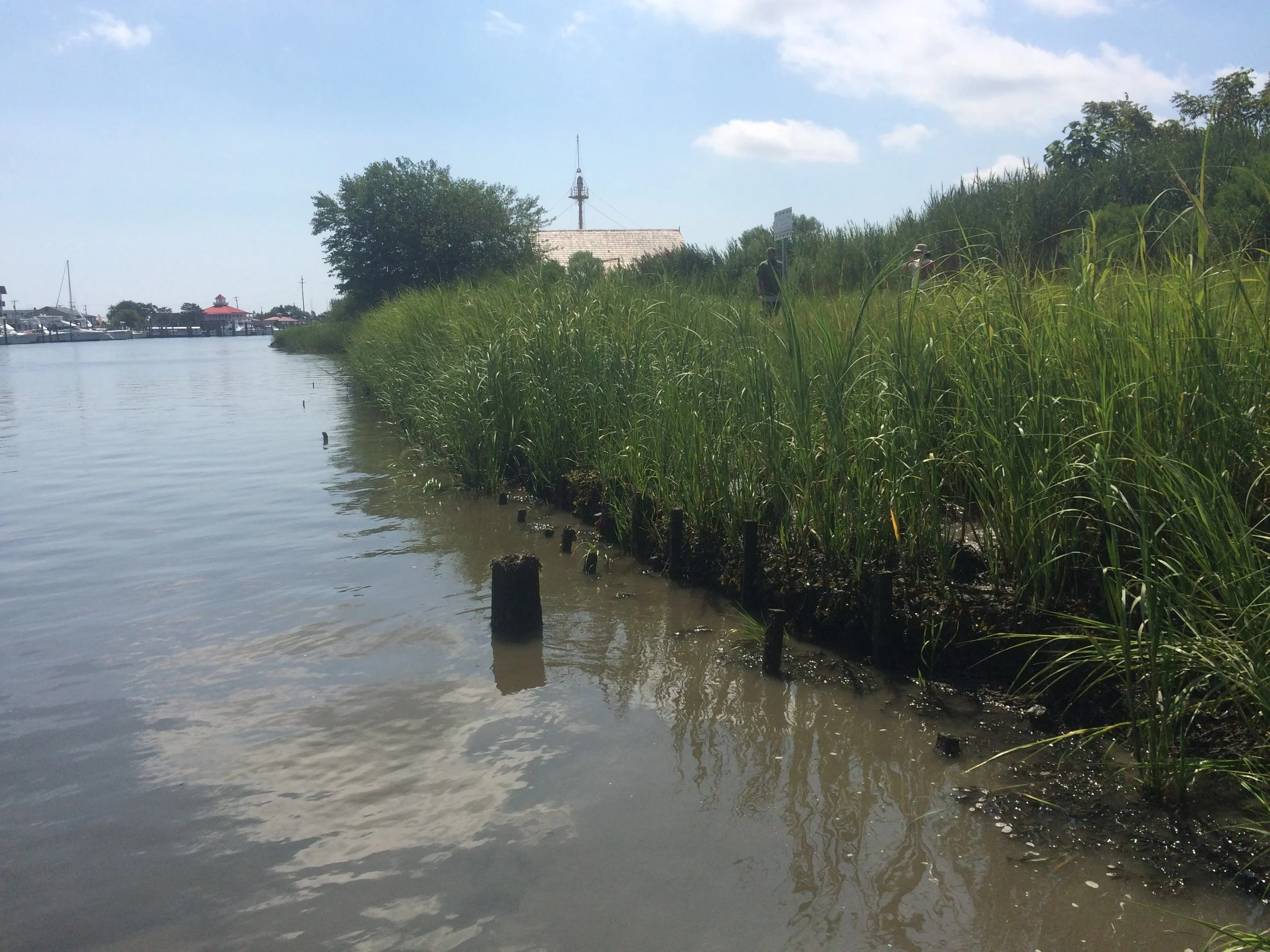Are you concerned with erosion on your property and thinking about doing something to protect and improve your shoreline? We’ve found a solution for you! A “living” shoreline is a nature-based structure built on the edge of a shoreline using natural materials. Previously, “hardened” structures such as riprap or sea walls were used to stabilize shorelines, but living shorelines are an innovative and environmentally-friendly alternative that uses natural materials and native plants including oyster shells, and biodegradable coconut-fiber logs (biologs). These have been installed successfully throughout the state of Delaware and throughout the Mid-Atlantic region.
Graphic credit: Frank McShane
How does a living shoreline work?
Like a hardened structure, living shorelines can provide shoreline stabilization in places where a shoreline is eroding. However, unlike hardened structures, living shorelines provide many other benefits for humans, plants, and animals besides shoreline stabilization, including cleaning water, improving habitat for animals, fish, and birds, and providing enjoyable aesthetics for property owners.
Living shorelines work by mimicking natural conditions and can change or adapt to the conditions around them making them a sustainable option for shoreline management. ‘Hard’ infrastructures, such as bulkheads or retaining walls, cannot change or move depending on the season, weather or other conditions, and often result in scouring, structural damage, and even shoreline erosion downstream.
Learn more about the benefits of having natural protection for your shoreline.
What is the purpose of a living shoreline?
Living shorelines consist predominantly of organic or natural techniques and materials, are connected between aquatic and land habitats, and when installed in higher energy or wave sites, the engineered structures should be minimal.
The main purpose of a living shoreline is to solve a problem like erosion, sediment contamination, or improve water quality. They tend to mimic but may not match the natural community ecology as the designs account for human interaction with the habitat. They also focus on changing physical forces and ecology over time instead of preventing change. A living shoreline is different than restoring a habitat or wetland mitigation.
Types of Living Shorelines
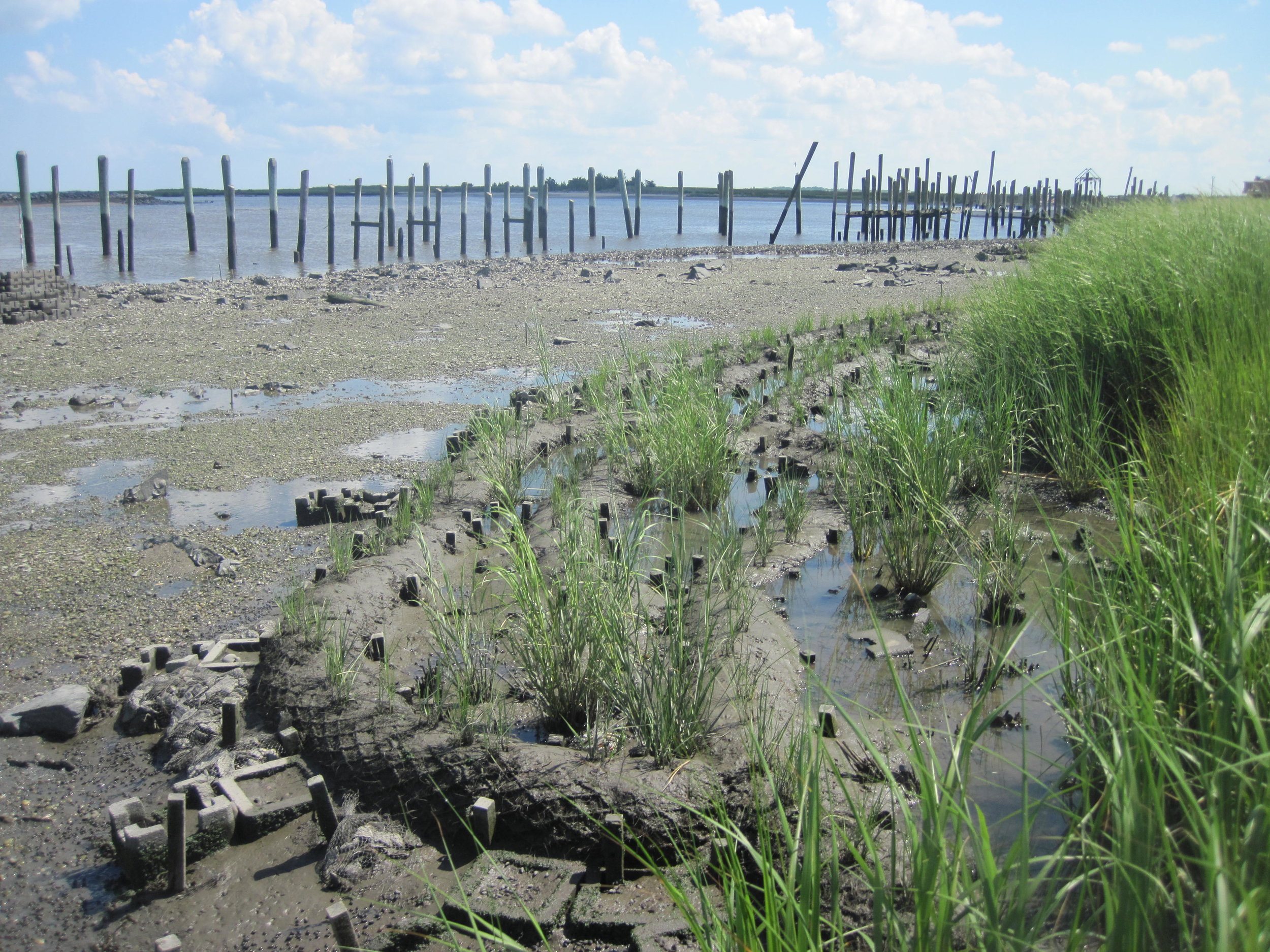
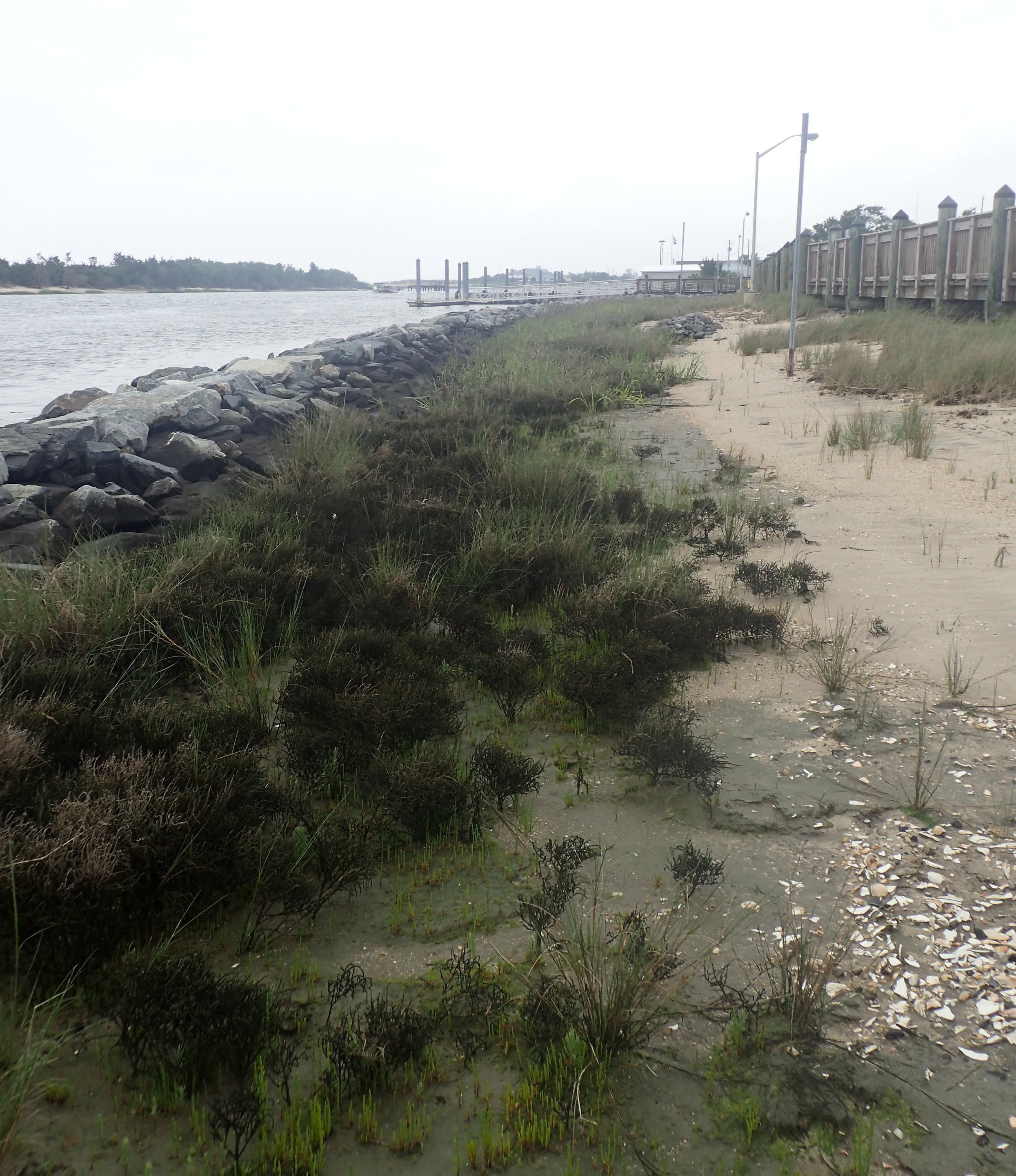
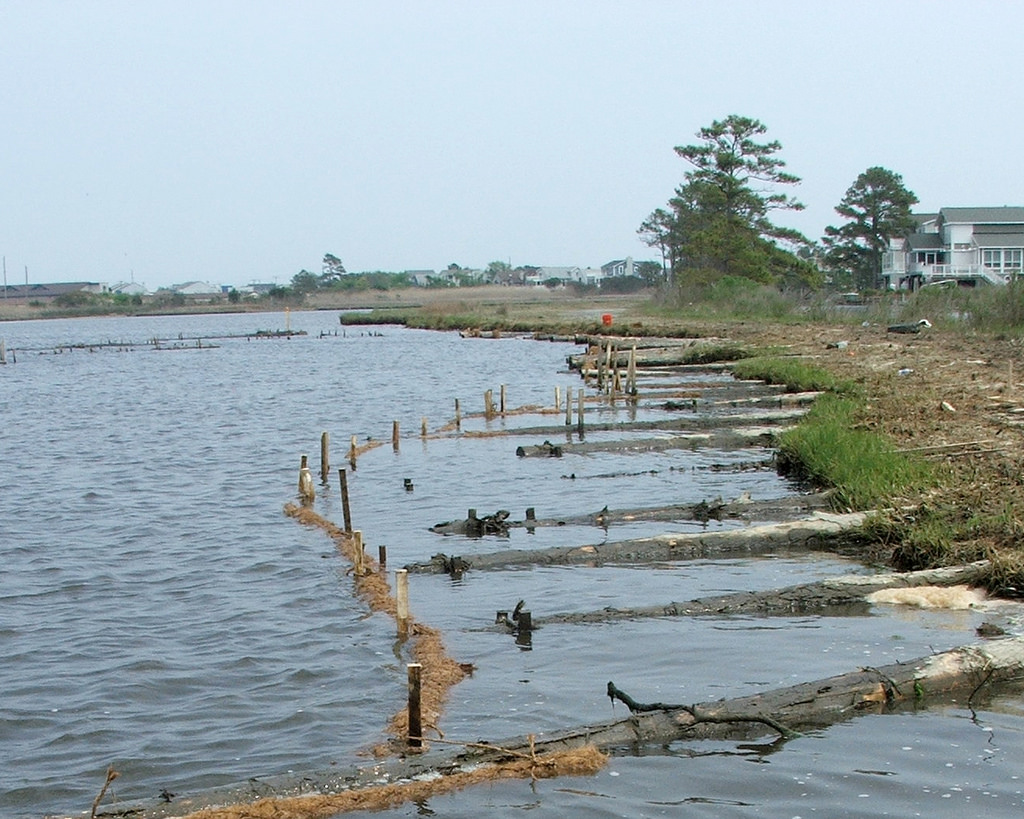
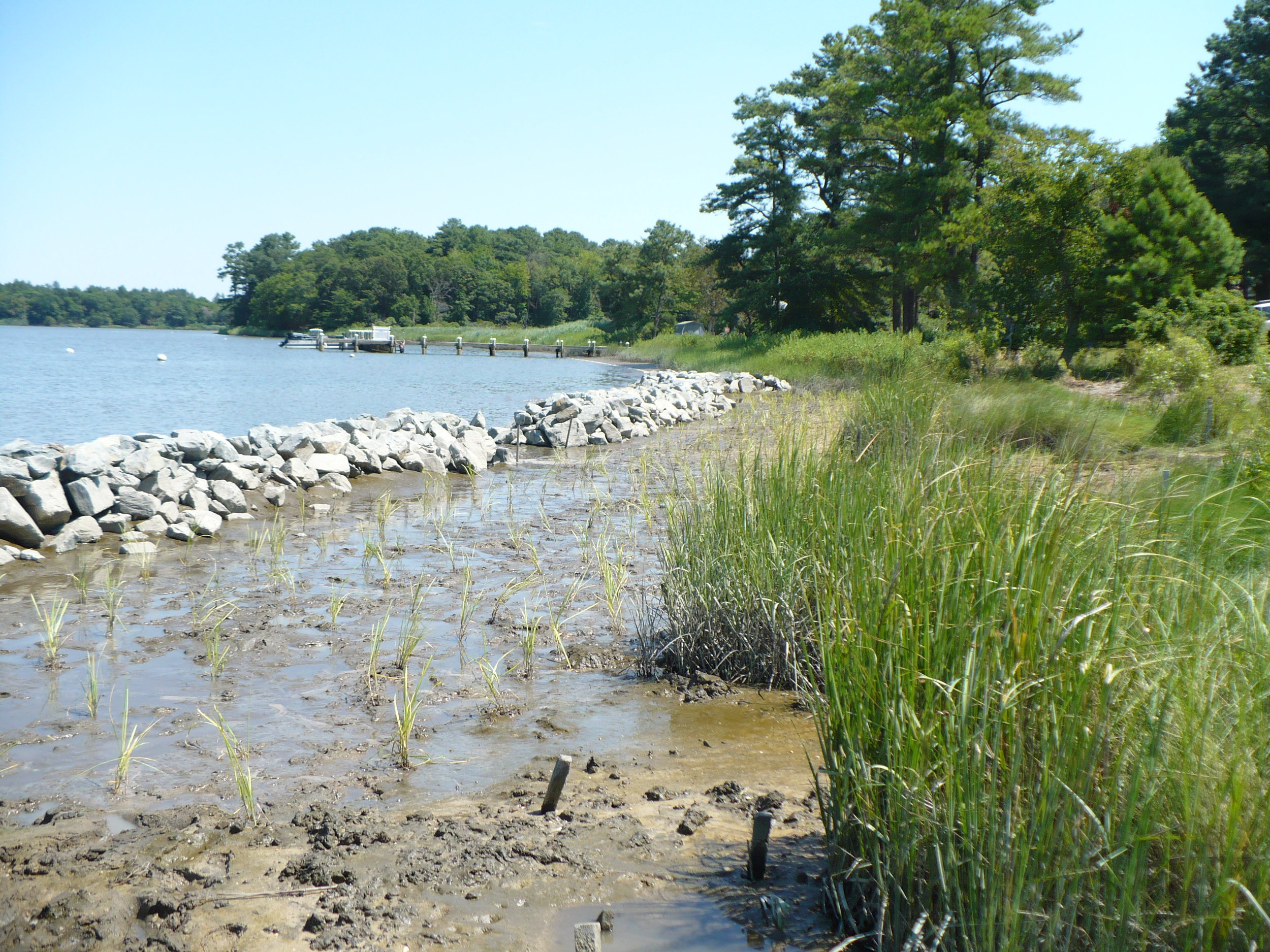
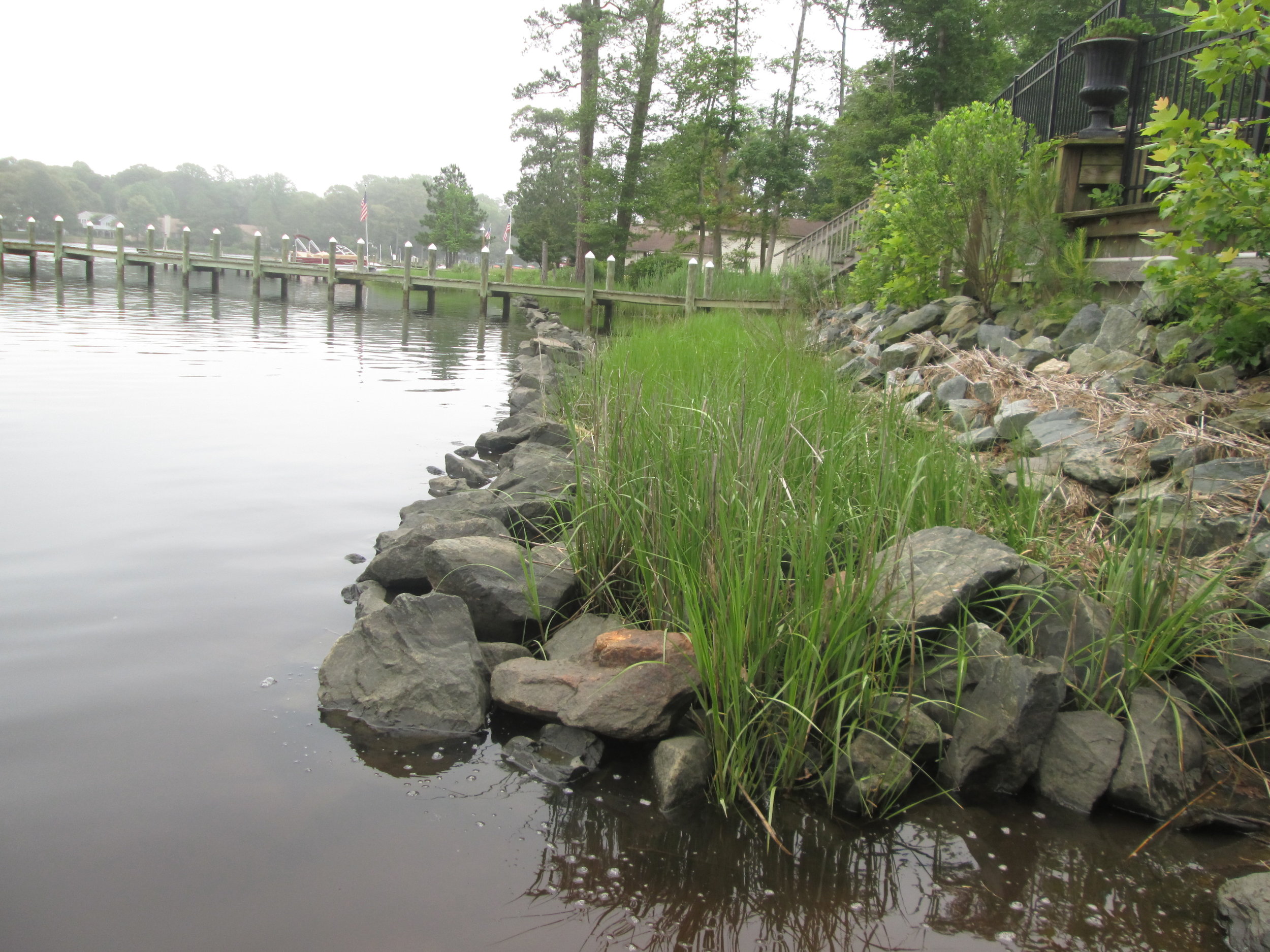
Because natural conditions, such as wave energy, vary, different types of living shorelines are needed for different conditions.
Traditional
Hybrid
A traditional living shoreline uses only natural materials, such as bio logs and native plants, to stabilize a shoreline. This type of shoreline is used in quiet areas with little boat traffic and small waves.
Sometimes, when a shoreline is exposed to winds and bigger waves, a traditional living shoreline needs some extra support. A hybrid living shoreline incorporates some rock and/or oyster shells with natural materials to provide extra support and stabilization. Rocks can be placed just offshore along a shoreline to form a marsh sill or in areas where there are a lot of waves and boat traffic, rocks can be placed offshore as a breakwater to reduce waves and provide additional protection for the living shoreline. Although hybrid living shorelines incorporate rocks, they are carefully designed to provide the same benefits as a traditional living shoreline.
Types of shoreline stabilization techniques, green or softer techniques (more nature friendly) to gray harder techniques. SAGE Living Shorelines Brochure.

